Science fiction defines itself as a genre that is constantly questioning the rules that society lives by. As such, it’s a perfect environment to challenge the different gender roles that society has erected to separate men and women. It’s pretty sneaky about it, too. Let’s take “Star Trek” for example. On a show about the crew of a spaceship that was boldly going where no one had gone before, no one would raise an eyebrow about the beautifully diverse cast. With such diversity, “Star Trek” was able to create a subtext that showed how men and women from all over the world can work together with mutual respect in order to solve serious problems. It was clear that the crew of the U.S.S. Enterprise would be lost without the abilities of Lt. Uhura, and Nichelle Nichols made this believable while retaining her identity as a woman—her character couldn’t have been replaced with a male, and if she was, it would have completely changed the crew’s dynamic.
With that in mind on this (slightly belated) International Women’s Day (yes, it’s a real holiday, and it should get more recognition here in the States), here is my list of the five most influential female characters in the world of science fiction. I’d like to kick this thing off with my very favorite Starfleet communications officer, Lt. Nyota Uhura.
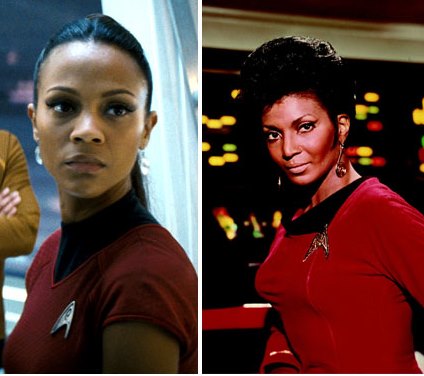
1. Lt. Uhura (Nichelle Nichols/Zoë Saldana), Created by Gene Roddenberry; “Star Trek” – Do we begin with the fact that Martin Luther King, Jr. met with Nichelle Nichols to express his admiration of the fact that her role on “Star Trek” was an important step in the Civil Rights Movement? Or do we start with how she used her role on the series to help NASA recruit women and minorities for the space program?
Not only was the character of Lt. Uhura a crucial part of the intrepid explorers aboard the Enterprise, she remains one of the best examples of how a fictional character can inspire real people to challenge their definitions of the world around them. It’s a tradition that Zoë Saldana has continued. During one of Entertainment Weekly’s “Women Who Kick Ass” panels at the San Diego Comic-Con, Saldana eloquently described the importance of allowing women to be characters instead of one-dimensional eye candy. The character of Uhura has helped the marginalized groups within American society to see that they too could boldly go where no one has gone before.
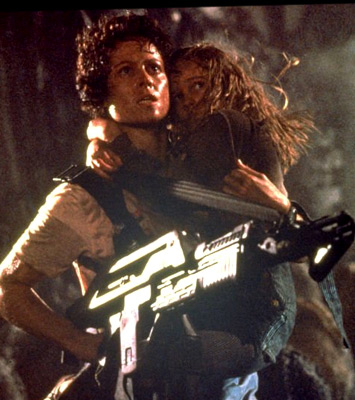
2. Ellen Ripley (Sigourney Weaver), Created by Dan O’Bannon and Ron Shusett; “Alien” – Ripley was originally intended to be a guy. Just let that sink in for a moment.If Ridley Scott hadn’t proposed the idea of switching Ripley’s chromosomes, would the words Get away from her, you bitch! have carried the same amount of gravity?
I don’t think so.
It’s also important to notice that Ripley is not overly sexualized, nor is she portrayed as overly masculine. She’s just a woman. A woman who happens to find herself in some nightmarish situations, and, despite the low chance of survival, manages to outsmart those slimy Xenomorphs anyway.
In the sequel, James Cameron did a great job of contrasting Ripley’s femininity with a squad of muscle-bound space marines. Regardless of the marines’ military training and firepower, let’s not forget that it was Ripley’s drive and resourcefulness that ended up saving the day.
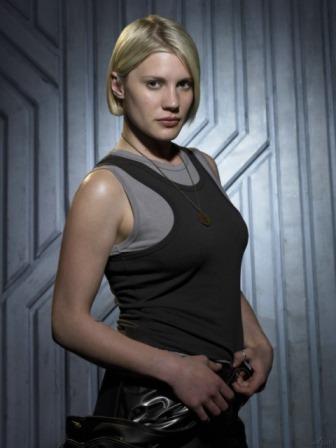
3. Kara “Starbuck” Thrace (Katee Sackhoff), Created by Ronald D. Moore; based on a character created by Glen A. Larson; “Battlestar Galactica” – It’s one thing to change a character’s gender before the project hits the screen. But Ronald D. Moore’s decision to make Dirk Benedict’s handsome, womanizing viper pilot into a hard-drinking insubordinate woman for his reimagining of “Battlestar Galactica” was nothing short of of fanboy anathema—and that’s not an exaggeration. Katee Sackhoff got death threats for agreeing to take the role, not to mention getting booed when she took the stage at the 2004 San Diego Comic Con. Little did they know that the “Battlestar Galactica” reboot would become a huge success, largely in part to Sackhoff’s memorable performance. As my mom always says, hindsight is 20/20, mother-frackers.
Despite the fact that Starbuck could drink most of the guys I know under the table and still be able to kick their asses, she never compromises her feminine mystique. In one of the most gut-wrenching events in the series, Leoben the Cylon tricks her into thinking that they’ve had a child together. Her maternal instincts kick in only to see that their “daughter” actually belonged to someone else. This moment, along with many others, show how her character evolved in very believable ways throughout the course of the series.
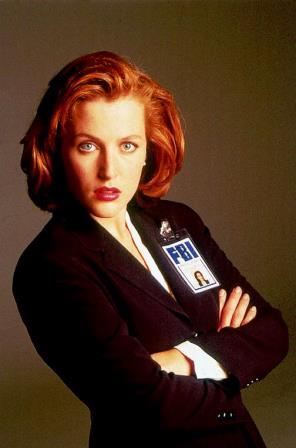
4. Dana Scully (Gillian Anderson), Created by Chris Carter; “The X-Files” – What better role model for female nerds than Agent Scully? She was thrust into a network of government conspiracies, alien abductions, monsters, and madmen because she decided to go to college and start a career. She also proved that, for a scientist who loves logical explanations and empirical evidence, she’s not too scared to admit that maybe there are some things that she just doesn’t understand.
“The X-Files” did a good job of creating a realistic character in Agent Scully. She was very accessible, which was crucial considering the show’s often bizarre subject matter. She was also great at keeping her cool under pressure, often using her intelligence and intuition to bail Mulder out of many a tight spot.
Like Ripley, Scully isn’t simply around for her male counterparts to rescue or make out with—she’s just a good woman who’s trying to do her job to the best of her abilities.
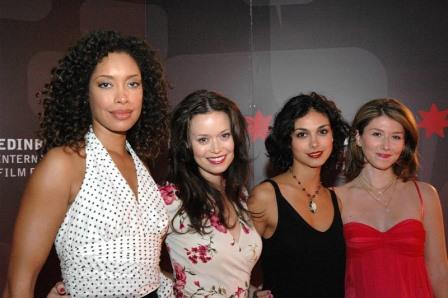
5. Joss’s Angels – The number five spot goes to the group of strong, believable, and dynamic female characters that Joss Whedon has created through the ages. Though she’s not technically science fiction, props have to go to Buffy Summers (Sarah Michelle Gellar), everyone’s favorite high-school student turned vampire hunter. Buffy was great at being tough in the face of the bloodthirsty undead, but she also had her moments of vulnerability and uncertainty, which is the staple of a good character.
Whedon’s space western “Firefly” was full of memorable women, including Zoe Washburn (Gina Torres), the badass ex-soldier with a soft spot for nerdy pilots; Inara Serra (Morena Baccarin), the geisha-like companion with a keen eye for business; Kaylee Frye (Jewel Staite), the optimistic and intuitive mechanic; and River Tam (Summer Glau), the mentally fragile living weapon. Like the crew of the Enterprise, these women and their evolving characters are a huge part of the show’s popularity.
As we’re wrapping up with some of Joss Whedon’s contributions to the world of science fiction, I’d like to leave you with this video of Mr. Whedon accepting the Equality Now award, in which he succinctly explains what female characters mean to their respective stories. Happy (although slightly belated) International Women’s Day, friends.